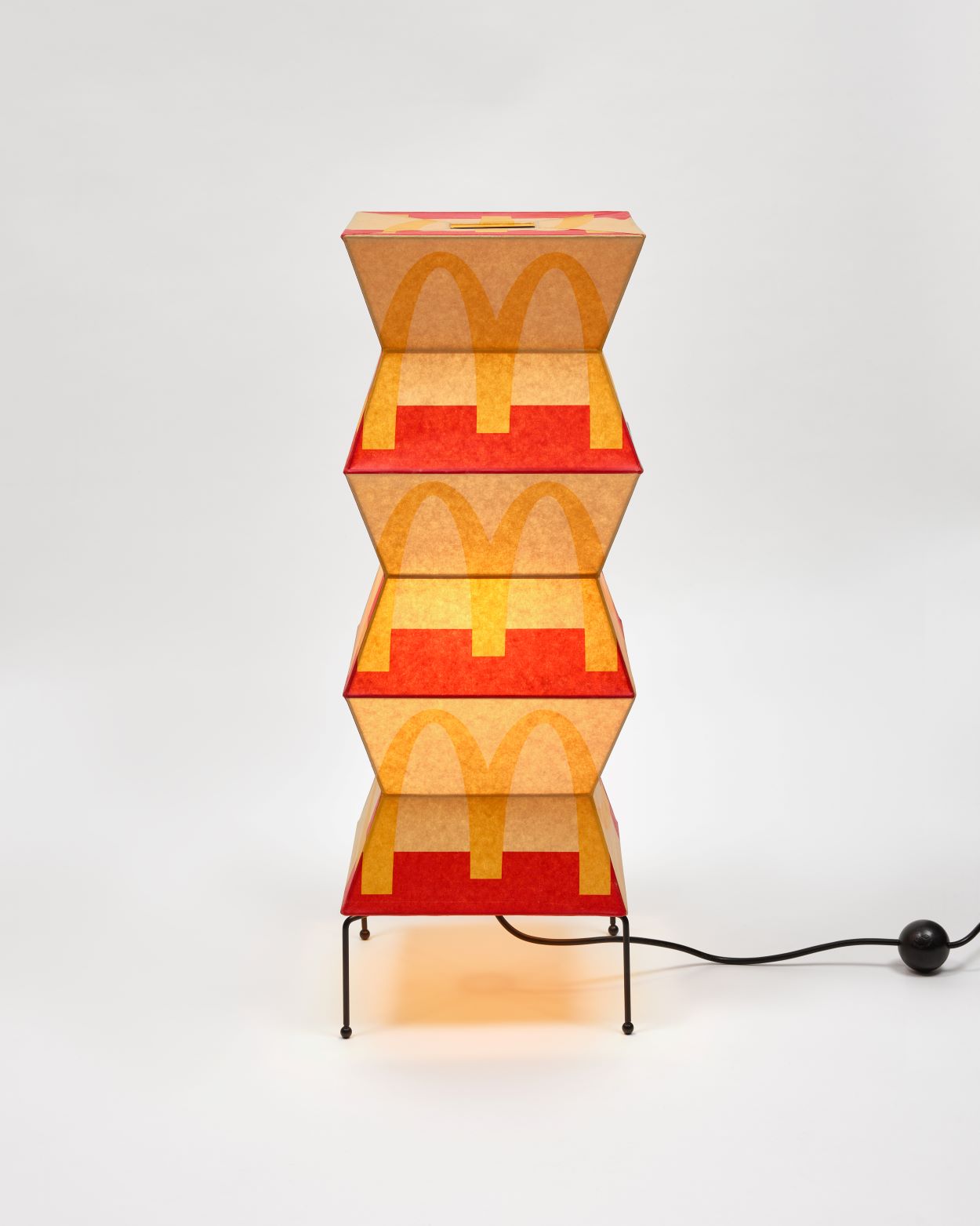I’M LOVIN’ IT
Credits
WORDS Juule KayMeet the artist turning McDonald’s paper bags into mesmerizing light sculptures.
The early 2000s are known for a lot of different things: The original Y2K style, flip phones (very chic), and, of course, Justin Timberlake’s infamous McDonald’s “I’m lovin’ it” jingle stuck in our heads. The South Korean artist and Gucci collaborator Gyuhan Lee has taken the catchy slogan literally, and transformed his love for the golden M into an unusual art project. “I always thought that the brand packaging all around us could be working material for me,” says the 27-year-old artist, who started out by upcycling old Nike shoe boxes into furniture pieces. For over a year now, Lee has been giving one of the most mundane objects, the paper bag, a special art makeover.
Little did he know his eating habits peak pandemic would lead to this brilliant new idea. “Back then, I often ordered McDonald’s to my studio,” says Lee, who studied Living Design at Kaywon University of Art and Design. “As a result, the paper bags naturally piled up and turned into a new working material.” Instead of throwing them all out, the South Korean artist started his very own journey of experimenting with a simple yet often overlooked everyday object.
After months of trial and error, Lee’s one-of-a-kind McDonald’s light sculptures took shape, referencing Isamu Noguchi’s infamous Akari series.
“It’s an important work in design history, which also shows the beauty of Asian craftsmanship,”
he explains about his homage to the renowned light work of the Japanese-American artist, which was first introduced in the early 1950s. Lee wanted to create his own “pop version of McDonald’s paper bags” as a way of embracing the zeitgeist of his generation.
While Noguchi used Japanese Washi paper from the inner bark of the mulberry tree, Lee decided to incorporate the traditional Korean paper, Hanji, preserving its cultural heritage. “Each paper has a different thickness and texture,” he describes the recycling process, in which the Hanji creates different surfaces and unique patterns. “In South Korea, you encounter paper folding and crafting very early in school, it’s the most basic and classic work,” he continues, reminiscing about his childhood, which was filled with memories about making things with his hands like paper models in elementary school.
With South Korea’s design scene booming, Lee has gotten worldwide recognition for his impeccable work, including exhibitions in Hong Kong and Milan’s Spazio Maiocchi.
“The culture here is still fresh, in the eyes of other countries,”
he explains the hype about his home, which goes beyond K-pop. For Lee, this is just the beginning. He’s currently working on a long-standing project in Seoul, which he doesn’t want to spoil too much about. Whatever it might be, we’ve probably seen it lying around, just in a different light. “I naturally try to express and make ‘beautiful things’ based on what I’ve witnessed in my everyday life,” he confirms, knowing perfectly well that you just have to look closer to see the endless potential surrounding you.



